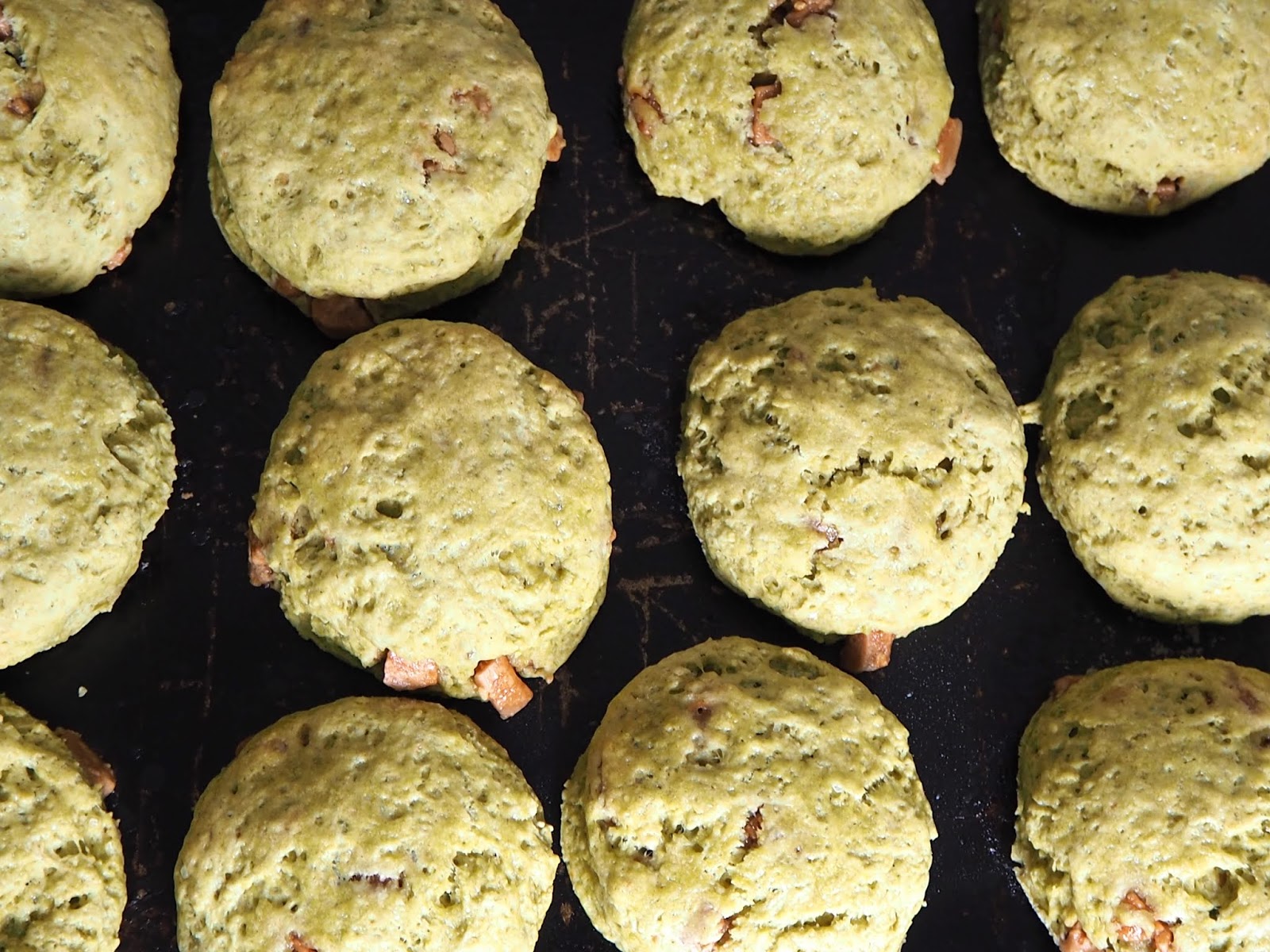I always though the main purpose of scones was to start arguments: specifically, about whether you have to pronounce it to rhyme with gone or own. (I favour gone, but if you're thinking own, I'm good with that too.)
Turns out that's not the only argument that scones like to start. I was watching an American baking show not so long ago where the chef was making scones. Rather than cut out crinkly-edged circles, she cut her scones into chunky triangles in what she described as "the traditional British shape". Erm, pardon? Every British scone I've ever eaten has been 360 degrees of lovely sconey goodness, not a straight line in sight. In contrast, the only triangular scones I've ever seen have been on US blogs or similar. It's been keeping me up at night wondering just which is the One True Scone Shape. Is it one of those things that started in the UK and but became inexplicably way better known abroad, like Hallowe'en, or James Corden? Scone historians, please get in touch. I'm losing sleep over this.
In the spirit on non-traditional scones, may I present a distinctly different (and distinctly green) take on the afternoon tea staple. I decided to put in matcha and barleygrass just because, but if you don't have any (and quite frankly, I can't imagine many houses where those things are knocking around), you can just go on and leave them out. Or put in some glace cherries, because cherry scones were one of my favourite things as a kid. I bet they're not traditional either, but they're still good.
Barleygrass, matcha, and white chocolate scones
Makes 10-15 scones
Ingredients
300g of self raising flour
25g of vegan butter
25g of flavourless oil, eg sunflower
75g of sugar
120mls of vegan milk
2g of matcha
1tsp of barleygrass powder
100g vegan white chocolate, chopped into chips
How you do it
Pre-heat the oven to 220C (or 200C for a fan oven).
Mix together the dry ingredients (flour, sugar, matcha, barleygrass)
Add the oil and butter and rub mixture together til it forms breadcrumbs
Add the chopped white chocolate and stir
Add the milk a few tablespoons at a time, mixing each time until the dough comes together. If it's a bit sticky, add a little more flour. If it's dry, add a teaspoon or two of milk.
Dust a work surface and rolling pin with flour, then roll out the dough to a couple of inches thick. Using your favourite scone cutter (if you don't have one, just use a glass tumbler or mug, or anything like that), cut out rounds from the dough and put them on a greased baking sheet.
Brush with your favourite non-dairy milk, and bake for 12-15 minutes.



barleygrass powder is a new one on me but my jaw really dropped at triangular scones being traditional british shapes - I told E who said his scottish granny and great aunts would be turning in their graves (that's as far as I can get into the history for you!). I actually thought one of the main arguments to have over scones is whether the jam or cream goes on first but I guess this is less of an issue on a vegan blog - though I keep wanting to try a vegan clotted cream - one day I will! (and for the record it was always jam first in my house)
ReplyDeleteSurprisingly, I have barleygrass powder at home, I picked it up along with chia seeds and something else as they were a bargain price. I had forgotten about them as I was not sure what to do with the barley grass and now you have inspired me. I will try them in a scone or some sweet bakes. I also agree with you all Brit scones in my life have been round, the only times ive seen triangle ones are from once upon a time from Starbukcs and then they were being sold as American! An American reader had a pop at me a while back when I made a American Pie asking me what was American about it? , so I guess its what we get told by those who think in the know how too...
ReplyDeleteI don't recall seeing circle shaped scones before, the ones around here are square or triangle shaped usually not vegan. So I'll take a dozen of your circle scones any day. :-)
ReplyDelete